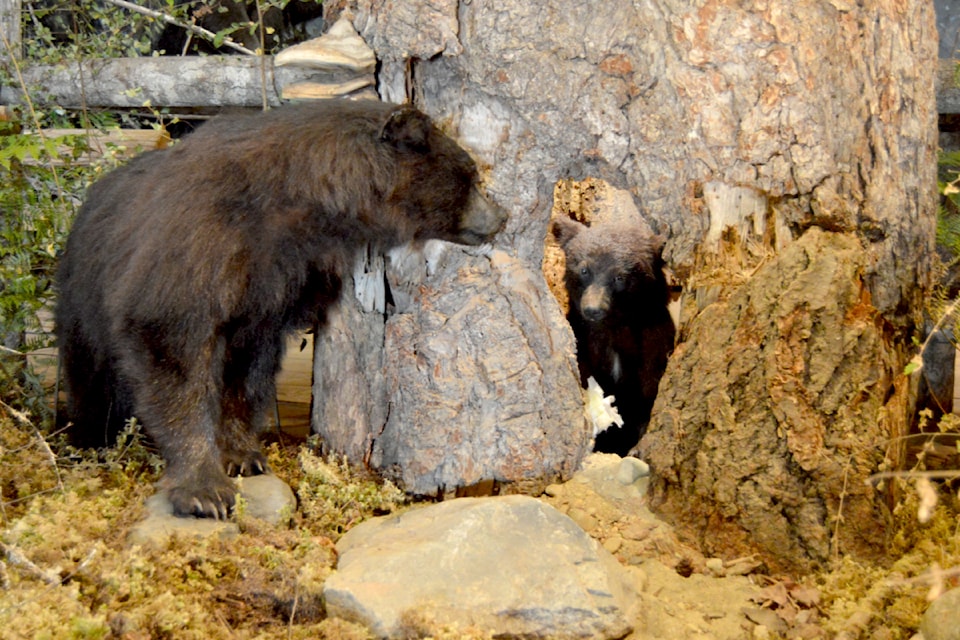The North Island Wildlife Recovery Centre has officially opened its new bear pavilion, an educational building that features black bears, with a focus on old-growth forests.
A ribbon-cutting ceremony was held to mark the opening of the new building, which cost approximately $200,000. The honour was given to Peter Karsten, who has dedicated his life to conservation work and artistic endeavours.
The pavilion was envisioned by centre founder founder Robin Campbell in 2021 when he was walking around with board of directors president Del Kristalovich, to assess things and look at different parts of the property where changes can be be made. They came across a wooded lot, Kristalovich said, and days later, Campbell told her about a "vision" he had for the place.
"Now, I've learned long ago, when Robin has an idea, we should run with it," said Kristalovich. "They should not be ignored because he always produces something wonderful for this area here."
The pavilion project received backing from generous donors and supporters and was completed this year in time for the the 40th anniversary celebration of the Errington wildlife recovery and education centre.
Campbell, who founded the centre with wife Sylvia, felt emotional upon seeing his vision become a reality.
"It's something that I had a dream and it's nice to see it completed and it's nice to see everyone here," said Campbell. "And most of all, it's going to be here long after I'm not here. And that's a good thing."
Campbell said when he built the pavilion he had two powerful goals he wanted to share with the public.
"The vital role of black bears and the irreplaceable value of old-growth trees in our wild rainforests," he said. "These two are woven together in a remarkable relationship that sustains the forests heartbeat. Black bears rely on old-growth trees for survival in the rainforest's wet, rugged winters, They seek shelter beneath the roots and in tree hollows finding refuge from the rain. These ancient trees provide safe, warm dens for mother bears to give birth to fragile cubs, offering protection and warmth their young need cubs need to survive."
Beyond shelter, the trees nurture a thriving ecosystems, supporting insect, mushrooms and plants that form the core of a bear's diet.
The pavilion features lifelike display of bears, information about the black bears and also old-growth forests, including First Nations art works. It aims to provide an educational experience to many visitors to the centre.
Campbell indicated seeing the centre grow from its humble beginnings 40 years ago to what is now, is a dream come true for him.
"I hoped it would be like this," he said. "I didn't know if it's be like this in my life, but I hoped it. When I get to see some of it now, it brings job to me. It's pretty special for me."



